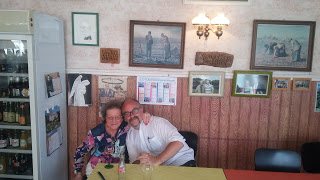Door Christopher Joby
 In a previous blog, I discussed the history of Dutch or Flemish in what is now French Flanders. This was historically part of the County of Flanders but over time it was gradually annexed by France, not least as a result of the expansionist policies of King Louis XIV. French culture including the French language gradually gained ascendancy in the region. Schoolchildren were taught in French and at one point they were told ‘don’t spit and don’t speak Flemish’. Nevertheless, traces of the Flemish variant of Dutch persist.
In a previous blog, I discussed the history of Dutch or Flemish in what is now French Flanders. This was historically part of the County of Flanders but over time it was gradually annexed by France, not least as a result of the expansionist policies of King Louis XIV. French culture including the French language gradually gained ascendancy in the region. Schoolchildren were taught in French and at one point they were told ‘don’t spit and don’t speak Flemish’. Nevertheless, traces of the Flemish variant of Dutch persist.
In the previous blog I mentioned place names such as Steenvoorde and Wormhout, which have clear Dutch origins. Other traces can be found in churches and cemeteries, which often act as the memory of a language. In the church to St. Vedast/Vaast in Hondschoote, there are gravestones in Dutch, and Flemish names abound in municipal cemeteries in Hondschoote, Cassel and other towns close to the present-day Belgian border. Boards on roadside chapels also attest to the historic use of Flemish in the area.
According to one source there are still some 200,000 speakers of Flemish in this area, although this may be an overestimate. Conversation evenings, information panels written in Flemish and bilingual street name boards in French and Flemish (e.g. Strazelestraete in Fletre/Vleeter as opposed to standard Dutch straat) are just some of the ways in which Flemish is kept alive in Northern France. In my travels around the region I came across a wonderful 85-year-old lady, Yvonne Dupont, in Godewaersvelde (great name), who still spoke Flemish, sometimes mixing Flemish and French. In some sense, Flemish in Northern France could be seen as an endangered language, but it still continues to be spoken in several social domains, including the local café!
Dit stukje verscheen eerder op Christopher Joby’s eigen blog.
Laat een reactie achter